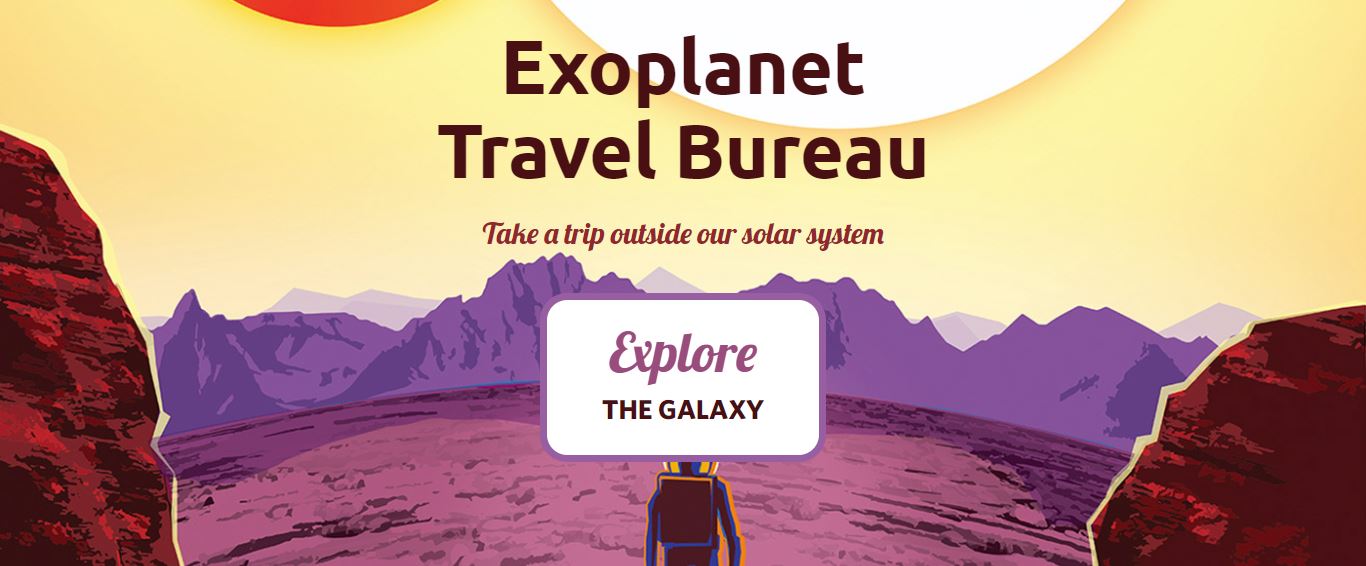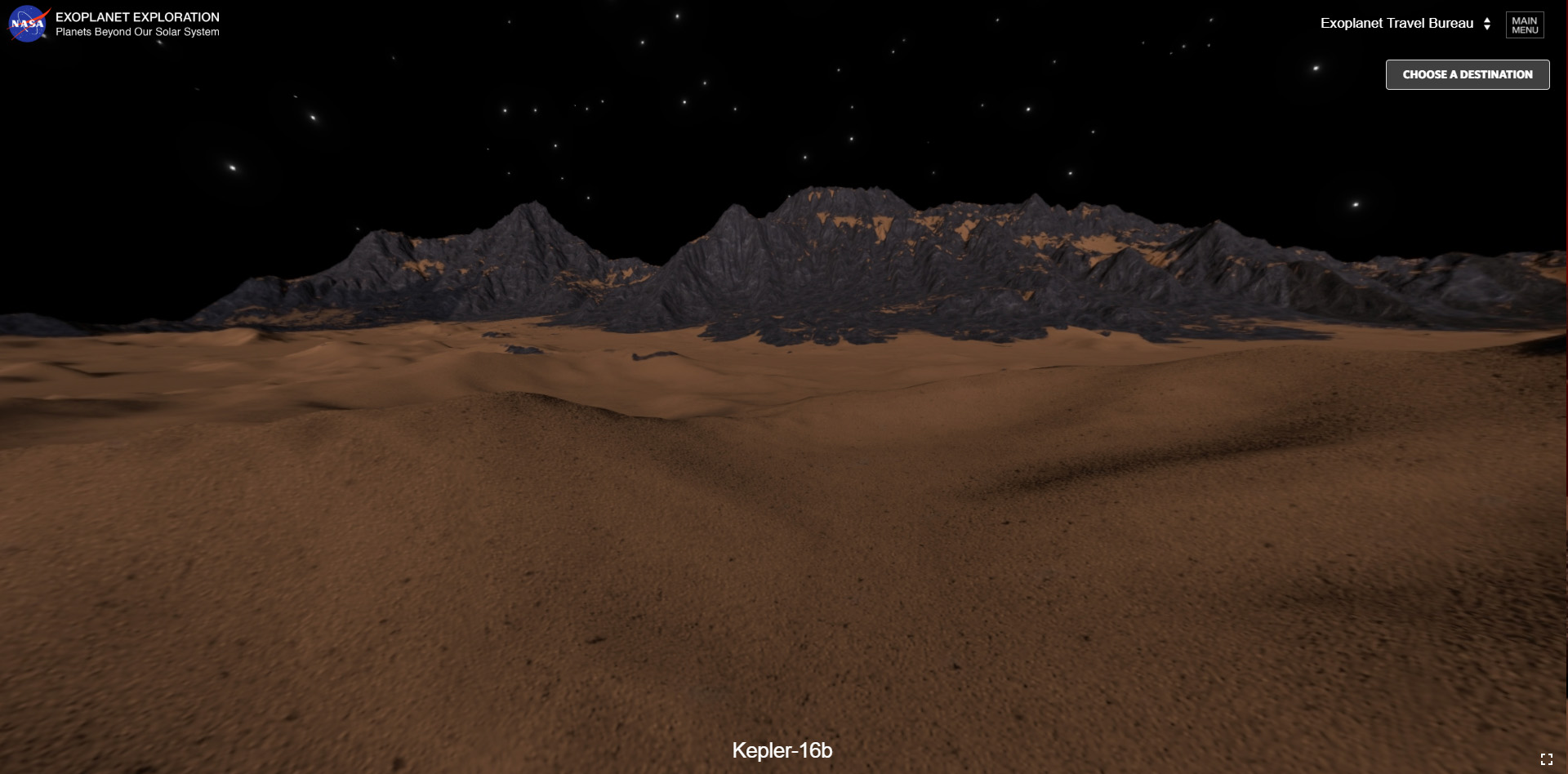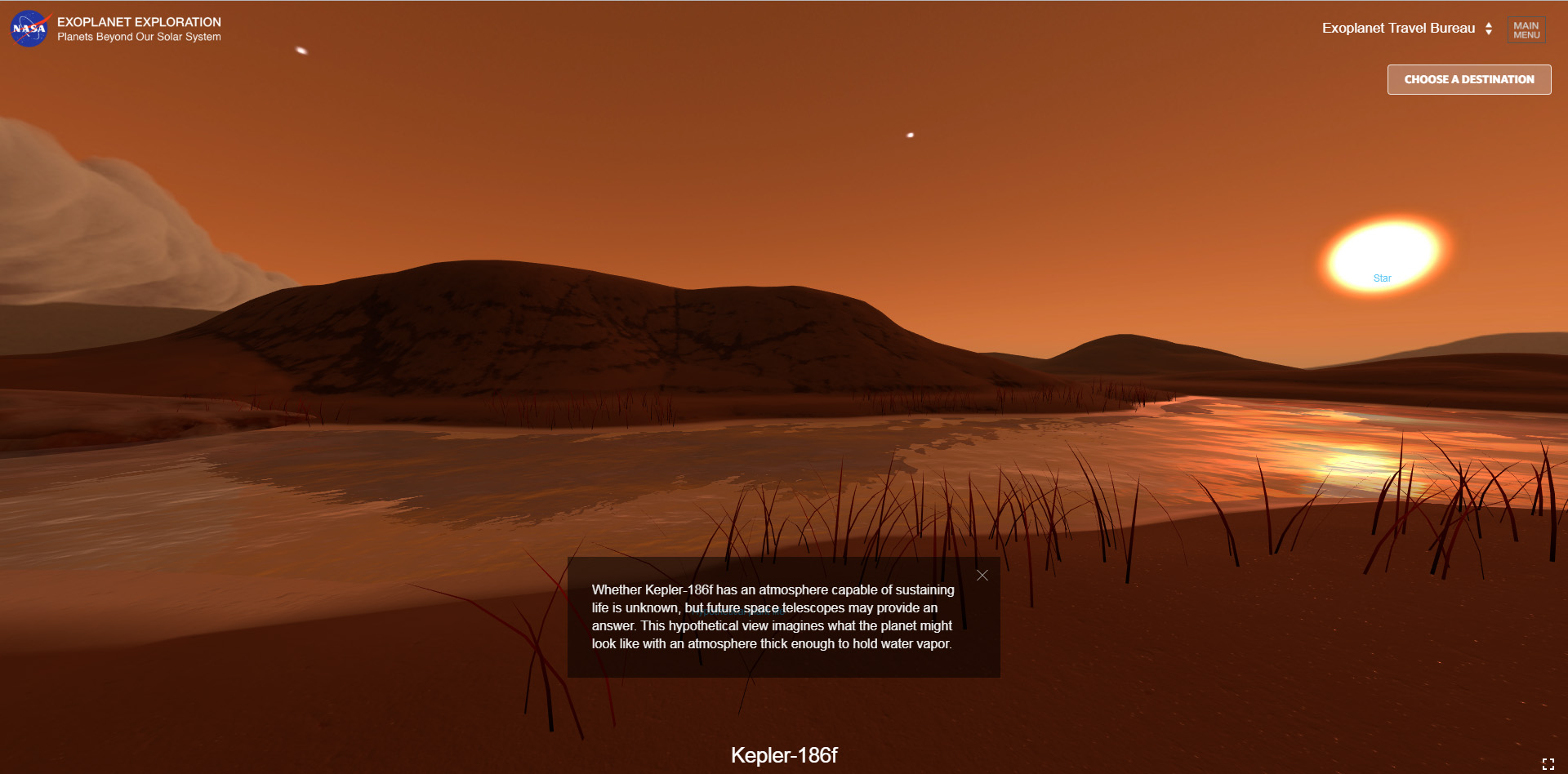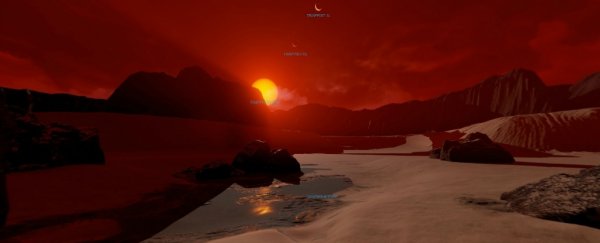Ever dreamt of stepping onto a faraway planet? Well, NASA has you covered with this incredible virtual planet simulator.
The Exoplanet Travel Bureau drops you into vastly different star systems to explore distant worlds.
You can enjoy Trappist-1e's blood red sky, a planet we now know has a large iron core.

The Trappist system has seven planets, and caused huge hype last year about possible water and Earth-like worlds only 40 light years away.
Or fly over onto planet Kepler-16b - part of a 'Tatooine-like' system 200 light years away, and the largest planet ever discovered orbiting two stars.
And it is huge – with a mass and radius nearly identical to Jupiter.
 Kepler-16b (NASA/Exoplanet Travel Bureau)
Kepler-16b (NASA/Exoplanet Travel Bureau)
You can even enjoy the brand new sights of Kepler-186f with NASA's tagline "Where the grass is always redder".
Kepler-186f is not in the same system as Kepler-16b, despite the similar names.
As NASA explains on its exoplanet website, it was "the first validated Earth-size planet to orbit a distant star in the habitable zone – a range of distance from a star where liquid water might pool on the planet's surface."
Keplar-186f is orbiting a star much cooler and redder than our Sun over 500 light years away, and despite the fancy explorer tool, we aren't even sure if it has an atmosphere yet.
 Kepler-186f (NASA/Exoplanet Travel Bureau)
Kepler-186f (NASA/Exoplanet Travel Bureau)
And that's really important to note, and NASA spells it out on every planet it drops you into.
We haven't explored these systems, we have no images of any of these planets, and the amount of data we have on even our closest exoplanet friends are still extremely limited.
As astrophysicist Jonti Horner and Brett Addison explained on The Conversation: "Most of the exoplanets found to date have been discovered by two key methods: either watching stars to see if they wobble, or to see if they wink."
Not exactly the incredibly detailed information and pictures we've been receiving from Jupiter, Mars, or Pluto.
So, we're still very far off seeing what they actually look like, let alone visiting them in person. But at least we can enjoy the virtual sights thanks to NASA - apparently these even work in one of those fancy virtual reality headsets.
You can explore the Exoplanet Travel Bureau here.
